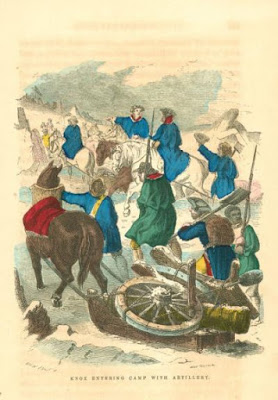Why Boston Celebrates Evacuation Day & St. Patrick’s Day on March 17
St. Patrick's Day marks Ireland's national holiday, and the Irish have been celebrating on March 17 for centuries, going back to the 18th century when the Charitable Irish Society held a small march in 1737! Read about the history of the Southie parade here.
Bostonians also celebrate Evacuation Day on March 17th, since that is the date in 1776 when American colonists forced the British to flee Boston Harbor by aiming cannons on the British fleet from the highest hill in Boston, Dorchester Heights.
The British presence in Boston began in October, 1768, when 4,000 British troops arrived in Boston after local citizens objected to a series of British taxes on the residents. Their presence led to a number of physical confrontations, starting with the Boston Massacre on March 5, 1770, when five Bostonians - including Irishman Patrick Carr - were shot dead by British soldiers.
The tension escalated and came to a head in April 1775 during the Battles of Lexington and Concord, followed by the Battle of Bunker Hill in June 1775.
Major General Henry Knox, whose parents came from Ireland, hatched a plan to force the British out of Boston. The 25 year old Bostonian suggested to General George Washington that the colonial troops retrieve the cannons that had been captured at Fort Ticonderoga in New York, and wheel them 300 miles to Boston.
His plan was to position the cannons atop Dorchester Heights in South Boston and aim them at the British fleet in Boston Harbor.
Knox set off with a group of men and captured 59 cannons in December and dragged them across the frozen landscape of western Massachusetts, finally arriving in Cambridge on January 24 to deliver them to General Washington.
Dubliner James Boies set up the fortification on Dorchester Heights. General John Sullivan was appointed by George Washington to be officer of the day. The password that day was Boston, the countersign St. Patrick.
The show of force that compelled the evacuation of Boston on March 20 was a turning point in the war. March 17 is now celebrated as Evacuation Day in Boston and is an unofficial holiday in Suffolk County. Coincidentally it is the same day as St. Patrick's Day, Ireland's national holiday.
The Dorchester Heights Memorial at G Street in South Boston was dedicated in 1902 and is managed by the National Park Service. A Plaque at the entrance reads "As the final act of an eleven month siege, the Continental Army occupied these heights and forced the evacuation of British troops from Boston on March 17, 1776 - General George Washington's first victory in the American Revolution."
Read the full story on Henry Knox in Mass Moments.
Knox’s father and uncles were original members of the Charitable Irish Society, formed in 1737 to help other Irish immigrants settle in Boston. A bookseller by trade, Knox joined the Society in 1772, when he was 22 years old. He also became a member of the Friendly Sons of St. Patrick in Philadelphia.
Knox died in Thomaston, Maine in 1806, where today the Henry Knox Museum is located.
For more about Boston Irish history, visit IrishHeritageTrail.com.





Comments
Post a Comment